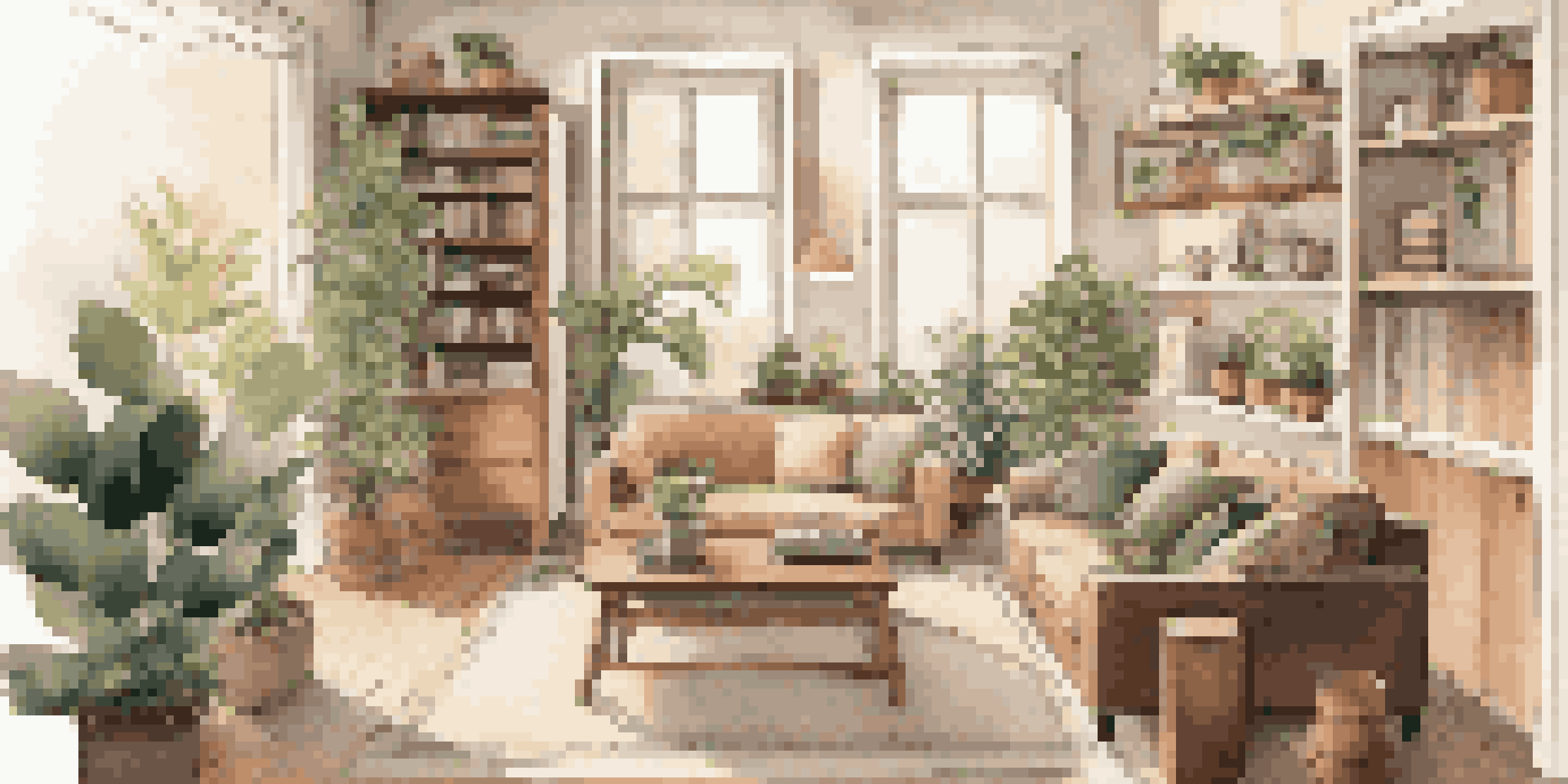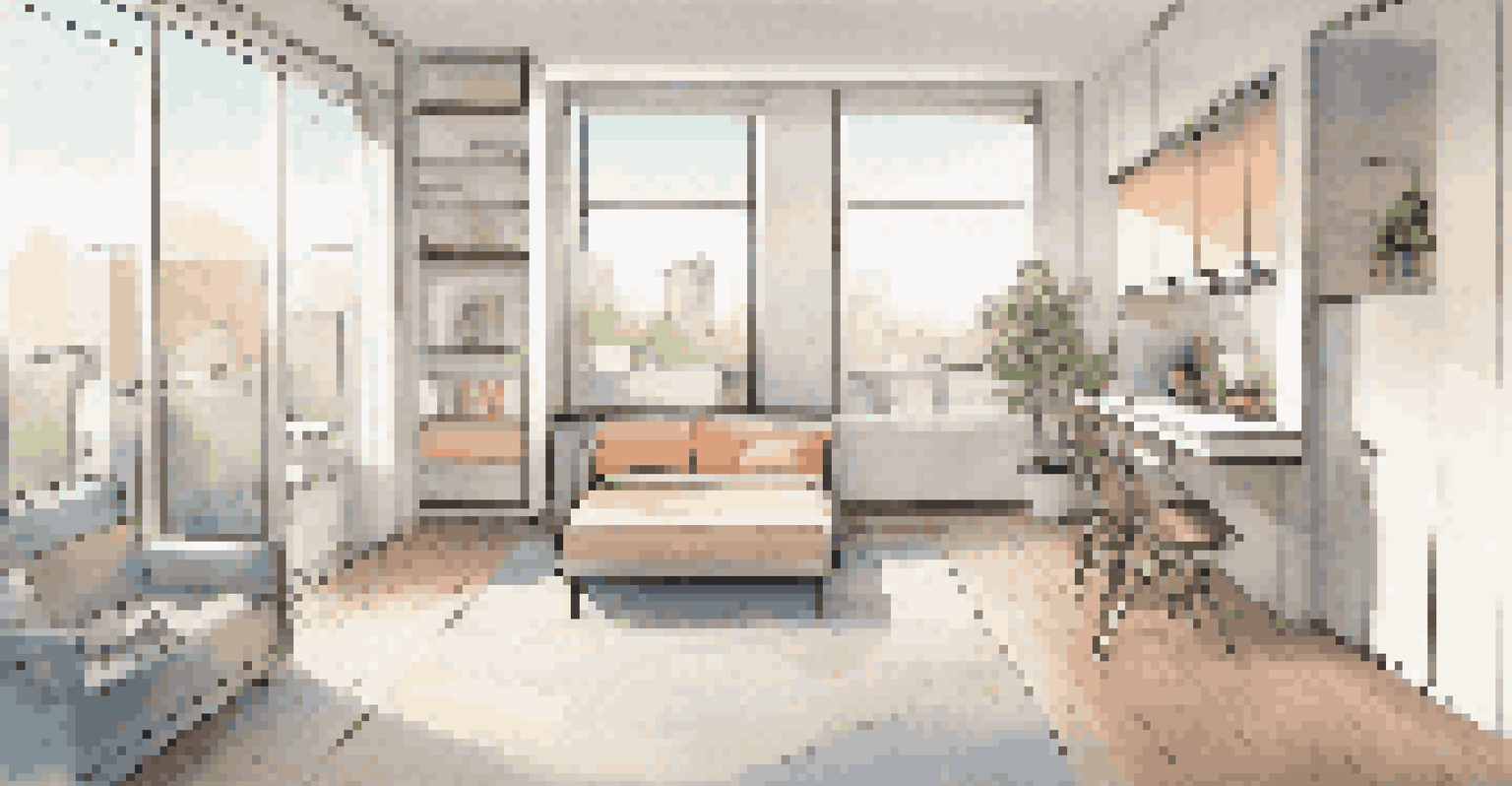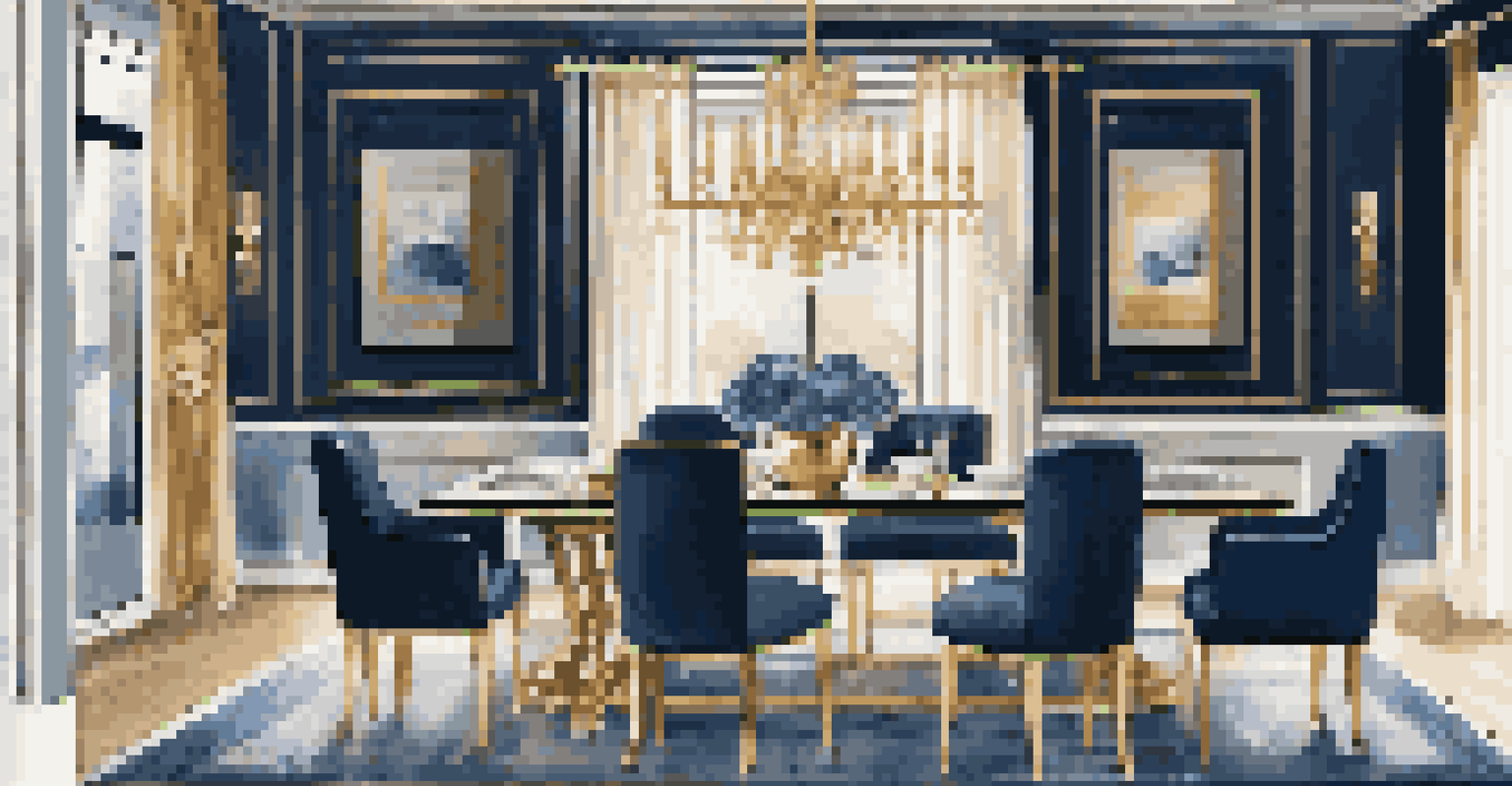Future of Home Design: Embracing Multi-Functional Spaces

Understanding the Concept of Multi-Functional Spaces
Multi-functional spaces are areas in our homes designed to serve more than one purpose, maximizing utility without sacrificing style. For instance, a living room can double as a workspace, allowing you to work from home while enjoying your favorite couch. This trend reflects a shift in lifestyle, where flexibility and adaptability are paramount.
The best rooms have something to say about the people who live in them.
As our lives become busier and more connected, the need for spaces that can evolve with our needs has never been clearer. Imagine a dining table that transforms into a desk or a guest room that can also serve as a gym. These versatile designs not only enhance functionality but also contribute to a more organized and spacious environment.
Ultimately, embracing multi-functional spaces means rethinking how we use our homes. It encourages us to be creative with our designs, pushing boundaries and finding innovative solutions that cater to our daily activities and long-term needs.
The Rise of Remote Work and Its Impact
The recent surge in remote work has drastically changed our perspectives on home design. As more people work from home, the necessity for dedicated, functional home office spaces has skyrocketed. However, many homeowners are realizing that a full-time office isn't always feasible, leading to the rise of multi-functional workspaces.

By integrating workspaces into existing areas, such as living rooms or bedrooms, individuals can create seamless transitions between work and leisure. For example, a stylish bookshelf can cleverly conceal a foldable desk, allowing the space to shift from a serene reading nook to a productive work area with ease. This flexibility helps maintain a healthy work-life balance.
Multi-Functional Spaces Enhance Utility
Designing multi-functional spaces allows homeowners to maximize utility by combining different uses in a single area.
Moreover, these adaptable designs foster a sense of productivity without sacrificing comfort. As we continue to navigate the evolving landscape of remote work, prioritizing spaces that can effortlessly transform will remain a key trend in home design.
Incorporating Technology for Enhanced Functionality
Technology plays a significant role in the evolution of multi-functional spaces. Smart home devices, like adjustable lighting and temperature controls, allow homeowners to customize their environments based on their activities. For instance, a living room can easily switch from a cozy movie night to a focused work session with just a few taps on a smartphone.
Simplicity is the ultimate sophistication.
Moreover, innovations such as modular furniture and customizable layouts are making it easier than ever to create spaces that adapt to our needs. Imagine a sofa that can be rearranged into different configurations or a dining table that expands to accommodate guests. These tech-driven solutions not only enhance functionality but also promote a modern aesthetic.
As we embrace the future of home design, integrating technology into our multi-functional spaces will be essential. This fusion creates environments that are not only practical but also responsive to our ever-changing lifestyles.
Designing for Small Spaces: A Growing Trend
In urban areas, where square footage often comes at a premium, multi-functional spaces are more than just a trend; they’re a necessity. Small apartments or homes can quickly feel cluttered if every piece of furniture serves a singular purpose. By incorporating versatile designs, homeowners can maximize their small spaces without sacrificing style.
For example, consider a murphy bed that folds away during the day, transforming a cramped bedroom into a spacious living area. Alternatively, a coffee table that converts into a dining table can make entertaining friends a breeze. These thoughtful designs allow for efficient use of space while maintaining an inviting atmosphere.
Embracing Technology in Design
Integrating technology into home design enhances functionality, making it easier to adapt spaces for various activities.
As more people seek to live in smaller, more sustainable homes, the importance of multi-functional designs will continue to grow. By embracing this trend, we can create spaces that are both functional and beautiful, no matter the size.
Emphasizing Sustainability in Home Design
Sustainability is becoming a cornerstone of modern home design, and multi-functional spaces contribute significantly to this movement. By creating versatile areas, we reduce the need for excessive furniture and materials, ultimately minimizing our environmental footprint. For instance, using reclaimed wood for a multi-purpose table not only enhances its character but also promotes eco-friendliness.
Moreover, multi-functional designs often encourage a minimalist approach, which aligns perfectly with sustainable living. When spaces serve multiple purposes, homeowners are less likely to accumulate unnecessary items. This shift towards intentional living is not only better for the planet but also fosters a sense of calm within the home.
As we look to the future, integrating sustainability into multi-functional home design will be essential. It’s about creating spaces that not only work for us but also respect and protect the environment.
Creating Zones for Work and Relaxation
One of the challenges of multi-functional spaces is maintaining balance between work and relaxation. It’s crucial to create distinct zones within a single area to promote productivity while ensuring a relaxing atmosphere. Using rugs or furniture placement can help delineate these spaces, making it easier to switch from work mode to leisure mode.
For example, a cozy reading nook can be set apart from a workspace with a strategically placed bookshelf or a decorative screen. This visual separation allows for a clear transition, helping to minimize distractions. Additionally, incorporating calming colors and textures in relaxation zones can enhance the overall ambiance, making it a sanctuary after a long day of work.
Sustainability in Home Design
Multi-functional spaces promote sustainability by reducing the need for excess furniture and materials, fostering minimalist living.
By thoughtfully designing these zones, we can enjoy the benefits of multi-functional spaces without feeling overwhelmed. This approach encourages a harmonious balance between work and relaxation, ultimately enhancing our quality of life.
The Future of Home Design: A Harmonious Blend
As we look ahead, the future of home design will undoubtedly embrace the concept of multi-functional spaces. The blend of technology, sustainability, and versatile design will create environments that are not only practical but also resonate with our lifestyles. Homeowners will be empowered to personalize their spaces, reflecting their unique needs and preferences.
Moreover, as we continue to adapt to changing circumstances, these flexible designs will offer the freedom to rearrange and repurpose our homes as needed. The emphasis will be on creating spaces that can evolve, ensuring they remain relevant in our fast-paced world. This adaptability will be a hallmark of future home design.

In essence, the future of home design will be about harmony—balancing functionality, comfort, and style. By embracing multi-functional spaces, we can create homes that are not just places to live but sanctuaries that enhance our lives.